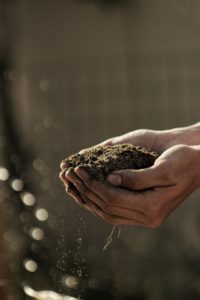We all feel the urgency of the call to action to prevent catastrophic climate change by changing the way we do things on a large enough scale to make a difference in a short period of time. That is why Regeneration Canada embraces all initiatives that are contributing to the solution. While we love organic agriculture, the acreage of certified organic farms is still relatively small as compared to farms that are not organic.
We embrace all initiatives contributing to solutions for soil health

There are many farmers who are not organic, yet are pioneering soil building methods which are very effective. We need to join forces with all the pioneers who are working to build the body of experience and data which can increase the land surface area which sinks carbon. That is why we focus on soil first and aim to include all initiatives. Sometimes the focus on what not to do can polarize the discussion. There is already a lot of tension between organic and conventional producers, with both sides feeling judged by the other. And in fact there are many shades of grey between the two. Conservation agriculture, no-till, reasonable agriculture, local agriculture, permaculture, urban agriculture are all important agricultural movements doing good work.
Living soils can remediate contaminants
We know that a healthy living soil can remediate contaminants. Bio-remediation shows us the power of fungi and bacteria and plants to restore the life of the soil.
Our good friend, agronomist Odette Ménard made the point at the recent panel we hosted at the Food Secure Canada annual assembly, that we may be focusing too much on the harms of certain molecules. She suggested that by building living soil, the need to use synthetic inputs naturally decreases over time. Much of the data on the harms of chemicals comes from looking at their use in a classic conventional management system, whereas a system with a diverse soil microbiome may be able to effectively degrade residues of many chemicals.
The test: growing radish in contaminated soil
She told us about a trial on cover crops she had supervised in a soil which had residues of a pesticide. There was a control group with no cover crop, a group using only radish as a cover crop and a group with a mixed species cover crop which included radish. In the plot with only radish, the pesticide residues inhibited the growth of the radish. They were small and stunted. But in the group with the mixed cover crop, the radish grew normally, demonstrating that the diverse biology around the mixed species crop, was able to inhibit the effects of a toxin.
Together for living soils
We know that agriculture is challenging. Getting a good harvest despite the challenges of weather, weeds and pests is no easy feat and there is no perfect method. That is why we applaud all farmers who are building soil organic matter and we want to make a place for everyone in our movement. Because whether you use some tillage, some chemicals, as long as your soil organic matter is increasing, as long as there are worms living in your soil, you are going in the right direction and we applaud your efforts! Together we can build the number of acres around the world which are drawing carbon into the ground, reducing erosion and building food security.




